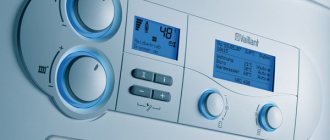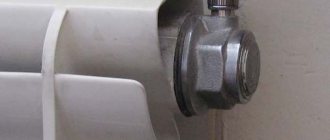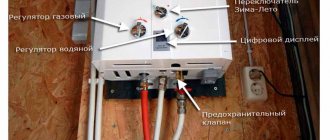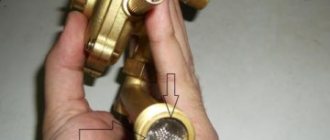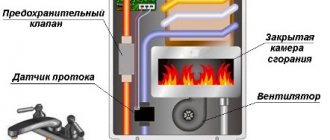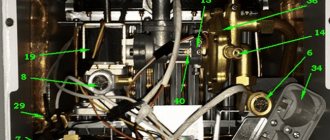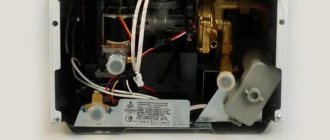Mag pro, Operating manual, Table of contents
Page 2
- Image
- Text
For the user
Manual
MAG pro
Operating manual MAG pro 835292_02
2
Table of contents
General information . . . . . . . . . . . . . . . . . . . . . . . . . . . . . 3
Distinctive characteristics of the product. . . . . . . . . . . . . 3
1
Directions for documentation. . . . . . . . . . . . . . . . . . . 3
1.1
Document storage. . . . . . . . . . . . . . . . . . . . . . . . . 3
1.2
Symbols used. . . . . . . . . . . . . . . . . . . . . . . . . 3
1.3
Device type. . . . . . . . . . . . . . . . . . . . . . . . . . . . . . . . . 3
2
Safety precautions. . . . . . . . . . . . . . . . . . . . . . 4
3
Installation and operation instructions. . . . . . . . . 5
3.1
Manufacturer's warranty. Russia. . . . . . . . . . . . . . 5
3.2
Intended use. . . . . . . . . . . . . . . . . . . 5
3.3
Requirements for the installation site. . . . . . . . . . . . . . . . . . . . 6
3.4
Care . . . . . . . . . . . . . . . . . . . . . . . . . . . . . . . . . . . . . . . . . . 6
3.5
Disposal of packaging and device. . . . . . . . . . . . . . . . . . 6
3.5.1 Device. . . . . . . . . . . . . . . . . . . . . . . . . . . . . . . . . . . . 6 3.5.2 Packaging. . . . . . . . . . . . . . . . . . . . . . . . . . . . . . . . . . . . . . 6 3.6
Tips for saving energy. . . . . . . . . . . . . . . . . . . . 6
4
Exploitation . . . . . . . . . . . . . . . . . . . . . . . . . . . . . 7
4.1
Overview of controls. . . . . . . . . . . . . . . . . . . . . . 7
4.2
Preparing the device for operation. . . . . . . . . . . . . . . . . . 7
4.3
Commissioning. . . . . . . . . . . . . . . . . . . . . . . . . . . . 7
4.3.1 Ignition of the pilot burner. . . . . . . . . . . . . . . . . . . . . . . 7 4.3.2 Setting readiness for operation. . . . . . . . . . . . . . . . . . . 8 4.4
Preparing hot water. . . . . . . . . . . . . . . . . . . . . 8
4.4.1 Analysis of hot water. . . . . . . . . . . . . . . . . . . . . . . . . . . . 8 4.4.2 Cold water dispensing or mixing
cold water. . . . . . . . . . . . . . . . . . . . . . . . . . . . . . . . 9
4.4.3 Adjusting the water temperature. . . . . . . . . . . . . . . . . . . 9 4.5
Power presetting. . . . . . . . . . . . . 9
4.6
Trouble-shooting . . . . . . . . . . . . . . . . . . . . . 9
4.7
Shutdown. . . . . . . . . . . . . . . . . . . . . . . . . . . . . . . . . . . 10
4.7.1 Disabling operational readiness. . . . . . . . . . . . . . . . . 10 4.7.2 Closing shut-off valves. . . . . . . . . . . . . . . . . . . . . 10 4.8
Frost protection. . . . . . . . . . . . . . . . . . . . . . . . . . . 10
4.9
Maintenance . . . . . . . . . . . . . . . . . . . . . . 10
Malfunctions of the Vailant geyser and methods for eliminating them
Possible malfunctions:
- Low hot water pressure. This malfunction of the Vaillant geyser is possible for several reasons; let’s try to consider in detail and understand the methods for eliminating them.
- Problem with the water unit. This can be determined if the flame is blue, but burns weakly with good gas pressure in the line. Or at first the liquid has a sufficient temperature, but over time it becomes cold. In 90% of cases this is membrane wear.
The first thing you need to do is remove the column lining. Remove the water adjustment lever, there is a mounting screw hidden under it, unscrew it with a Phillips screwdriver. Also pull out the gas handle, then pull the trim towards you and remove it.The water unit is located in the center and is attached with two screws to the gas block; a heat exchanger is connected to it using a threaded nut. In order to remove the assembly, we need a Phillips screwdriver and a wrench to unscrew the heat exchanger nut.
Disconnect the piezo ignition wire. That's it, we've removed our assembly, then use an 8 key to unscrew the six screws that secure the assembly. Pull out the brass fitting using duckbills and remove the metal bracket that secures it. We have reached the middle of our device.
Piezo ignition of a gas column
Visually assess the condition of the membrane; if it is not stretched or torn, just rinse it. If signs of wear are found, replace it with a new one; we recommend purchasing silicone, as it is more durable.
Also wash the mesh filter through which liquid enters the device. It is also possible that the spring installed on the fluid flow regulator has failed; if so, replace it. That's all the repairs that can be done on your own in this unit.
- The next common reason for poor hot water pressure is the accumulation of scale in the heat exchanger. The instructions for the Vailant geyser state the recommended temperature range of 40-50 degrees, at which less scale will accumulate and form on the walls of the heat exchanger.
It is recommended to heat the water to such a temperature that there is no need to dilute it with cold water. In addition, plaque significantly increases gas consumption. Another way to reduce the formation of deposits is to install a filter that will soften the water. So, how do you still solve the problem?There are special solutions for this that are sold in stores, however, there is a way to save on purchases by making the cleaning liquid yourself. To do this, use ordinary citric acid 200 grams, dissolve it in 800 milliliters of warm water, the cleaning reagent is ready.
Radiator cleaning equipmentAs for the cleaning method itself, there are also several options, but for each of them we will need to remove the radiator. The first method involves the use of a special device. This is a reservoir that is equipped with a pump and has two hoses that connect to the inlet and outlet of the radiator.
Warm liquid diluted with a cleaning reagent or a self-prepared reagent is poured into the tank. The duration of cleaning is about 60-90 minutes, depending on the degree of contamination. One of the most obvious disadvantages of this device is its high cost.
The second method - for this you also need to disconnect the radiator from the device, and prepare in advance a sufficiently large container that can be placed on the stove for heating. Fill the selected container with water, a little less than half, and immerse the heat exchanger there.
Pour the prepared or purchased acid solution into the heat exchanger tube. Wait until the liquid boils, then reduce the heat and leave to simmer for about two hours. The final stage is flushing the radiator; it must be washed very thoroughly under a running stream, since contact of acids with human skin is unacceptable.
- There is no draft in the chimney. There are several methods to check. The first is to open the window for ventilation, take a candle or lighter and bring it to the ventilation hole; if the flame is motionless, then the channel is clogged and needs to be cleaned.
The second way to check is to open the window, take a piece of paper and apply it to the ventilation hole; if there is good draft, the sheet will press against it. If it falls, then the channel is clogged. The second method is safer, because if the residents of the house where you live have a gas leak, and you bring a fire source to the hood, an explosion is possible.In order to clean the channel, you need to take a flashlight and shine it there to make sure that there are no large objects there. If you find the source of the blockage, remove it, and if you can’t do it yourself, contact a special service.
- The batteries are discharged or damaged (leaked). If they just shrink, replace them with new ones. If they leak, you need to clean out the socket and insert new ones.
Geyser socket for installing batteries - Low cold water pressure. There are also several options here: insufficient water pressure in the main. The solution to this problem is to contact the city water utility and describe the situation. If this does not produce results, the solution is to purchase a new gas water heater that can operate at low pressure. Or installing a pump that will artificially create the necessary pressure. The coarse filter, which is installed at the cold liquid inlet, may also become clogged; check and clean it, and if necessary, replace it with a new one.
- The membrane has failed. How to repair it is described above.
- The filter mesh on the faucet may also become clogged. Unwind it and rinse it.
- The gas valve may be closed, open it.
If the speaker does not turn on. When you turn on the device, a protective mechanism is activated to prevent an emergency. Gas is not supplied to the device.
Gas water heater igniter
The reasons for non-ignition may be the following:
During operation, the device smokes and the flame burns orange. The reason for this is very simple, you have not carried out the necessary routine inspection and cleaning for a long time. During operation, soot settles on the radiator elements and prevents sufficient combustion products from escaping. The device understands this as a lack of traction and turns off. The device needs to be cleaned.
The radiator started leaking. This problem can be solved by having a soldering iron with a power of at least 100 watts, solder, and a degreasing agent. Drain all liquid from the radiator, as it will take on the temperature during operation.
Gas water heater radiator
Using sandpaper, clean the area of the fistula, then treat this area with a solvent and heat up the soldering iron. To prevent metal oxidation, use rosin; if you can’t find it, you can use a crushed aspirin tablet and sprinkle it on the soldering area.
If the tin falls in drops, the soldering area may have been poorly heated or there is not enough flux. It is recommended to place at least 2-3 mm of solder to avoid re-formation of leaks. If you see green dots on the surface of the radiator, this is the first sign of a fistula formation. To prevent it, perform the above actions with it.
We invite you to watch a video about malfunctions of the Vailant geyser that may occur when turned on:
General information, Product characteristics, 1 documentation instructions
Page 3
- Image
- Text
3
Operating manual MAG pro 835292_02
general information
MAG pro devices are ready for connection. They just need to be connected to the pipelines and gas exhaust system. They serve to supply hot water to one or more water points, such as washbasins, showers and bathtubs. The devices must be connected to a natural draft gas exhaust system (chimney). They are equipped with a maintenance-free piezoelectric igniter for the pilot burner. All gas instantaneous water heaters are equipped with a draft tipping sensor (sometimes also called a sensor for the release of combustion products into the room), which, in the event of a malfunction in the gas outlet pipeline, interrupts the gas supply to the burner. The devices can be adapted to the type of gas available. To convert the device to another type of gas, contact a specialist certified by Vaillant from a specialized licensed enterprise.
After installation, the installer noted the exact designation of your device in the installation manual in the table. 10.2 “Setting parameters depending on the type of gas.”
Distinctive characteristics of the product
The maximum performance of the device can be smoothly adjusted depending on the need by pre-setting the power. These features provide the user with the following benefits: – The device only consumes as much gas as
really required at the moment.
– The use of mixers with thermostats and
single lever mixers are possible without restrictions.
1 Instructions
To
documentation
The following guidelines provide a “guide” to all documentation. Other documentation also applies in conjunction with these operating and installation instructions. We do not accept any liability for damage caused by failure to comply with these instructions.
Shared Documentation
For specialists: – Installation instructions
№ 835292
Other instructions for all spare parts and accessories used also apply.
1.1 Storage
documentation
Please store this operating manual as well as all supplied documentation so that it is readily available when needed. When moving or selling the device, pass on the documentation to the next owner.
1.2 Used
symbols
When operating the device, observe the safety instructions in this operating manual!
Dangerous!
Immediate danger to health and life!
Attention!
Potentially hazardous situation for equipment and the environment!
Note!
Useful tips, information and directions.
• A symbol of the need to perform some action.
1.3 Type
devices
You can determine the type of device installed based on the designation in section 10 “Technical data” in the installation manual, which the installer writes down upon completion of installation.
general information
Distinctive characteristics of the product
Notes on documentation 1
No image, show text version
Gas instantaneous water heaters
The advantage of heaters from Germany is copper heat exchangers. They are durable and reliable. Burner material – chrome-nickel steel. All models have a traction rollover sensor. The productivity of household appliances is 14 l/min. There are two options for water heaters:
- Basic version. Power – two stages. Piezo ignition - to turn on the device, just press a button.
- Extended version. 10 power levels. Automatic regulation of fuel flow and pressure.
In addition to piezo ignition, German speakers can be equipped with electric ignition - ignition is carried out by batteries. The user only needs to open the hot water tap for the device to work.
The brand offers models that differ in technical indicators, the main one of which is power - it determines the speed and volume of water heated by the device per minute. Vaillant produces water heaters with a thermal power of 10-25 kW.
Popular models
The Vailant AtmoMAG exclusiv RXI geyser is equipped with a modulating burner and automatic ignition from batteries. The possible variation in the heat output of the burner device is in the range from 30.0 -100.0%. The process takes place automatically and the combustion rate is programmed by changing the pressure of the heated medium.
Another popular model is a semi-automatic column with piezo ignition, draft sensor and overheating protection AtmoMAG exclusiv RXZ - the device has a built-in modulation burner and an electronic torch control sensor. The modification is universal, runs on two types of fuel, ensuring stable operation at low gas parameters.
